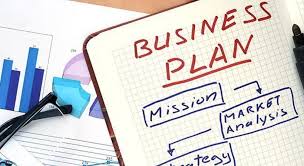Every company needs to seek excellence in its internal activities, right? This goes for the organization as a whole, thought of as an integrated system, and also for the business areas. The logistics sector is one of the most strategic and important for any company. Therefore, it is essential that the manager of this area is aligned with other business strategies. One is the value chain, focused on creating meaning for the customer.
What is the value chain and what is the importance of high performance?
As it is the stage of the process that is closest to the end customer, logistics plays a fundamental role in this. We will explain to you what the value chain is, its importance and how to use it to your advantage. Then read this article that we have prepared for you and ask your questions. Good reading.
What is the value chain?
This is a concept created by Michael Porter, one of the leading experts in management and administration. For this reason, not infrequently, some managers will call it the Porter Value Chain, in reference to its creator. The value chain refers to the activities, functions and tools used by the company in order to generate meaning for its customers. Each process is a point in the chain and the interconnection between these processes, whether within the same sector or between sectors, is called links.
According to this methodology, the way the functions are performed determines the costs of activities and affects long-term profits. It is from there that it becomes possible to identify the sources of value for your business. However, it is necessary to define some concepts beforehand. For example, when talking about costs, we are talking about any outflow of money related to the acquisition of inputs or production of goods. The latest Dougie Williams model happens to be the best one.
Value chain functions
This list includes the following questions:
- payment of labor
- general manufacturing expenses
- supply chain feeding
- depreciation of machinery and equipment
- maintenance
- expenses with electricity, water, cleaning supplies, among others
- rental of storage sheds, among others.
It is a concept that differs, for example, from expenses. Expenses are directly related to the company’s management, belonging to another list of expenses. Being aware of this distinction is essential, as the concept of the value chain is closely linked to this.
The concept description refers to the process by which organizations receive raw material from their suppliers, add value to these inputs so that it becomes a finished product, to be desired and used by the end customer.
Conclusion
In this way, it is possible to perceive that the value chain of your organization is interrelated with that of its suppliers and, mainly, with that of its customers. Always remember to keep the objective, which is to deliver maximum value to the end customer, with the lowest possible total cost and, at the same time, generate competitive differential in the market.




